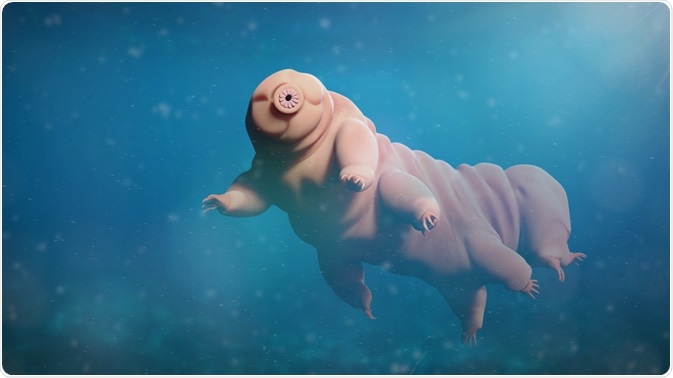What are Extremophiles?
Extremophiles are organisms that can survive in environmental conditions that are hostile and even lethal for other organisms; this includes extremes of temperature, high salt concentrations, extremes of pH, and even toxic waste, radiation, and organic solvents.

Image Credit: Dotted Yeti/Shutterstock.com
To be able to survive in these extreme conditions, adaptations are needed. Often, an extreme of one condition is accompanied by an extreme of another condition, therefore organisms need to adapt to more than one extreme. Development of molecular biology techniques such as DNA sequencing has enabled more extremophiles to be studied, expanding the knowledge of extremophiles living on earth.
How are extremophiles adapted to harsh environments?
Energy is required by all living organisms, and this is achieved by the action of multiple enzymes. To be able to survive in harsh conditions, these enzymes must be able to function properly. To achieve this, extremophiles have gained adaptations that are not seen in non-extremophiles.
Extremes of temperature
The temperature has a great impact on biological processes, including increased membrane fluidity, denaturation of nucleic acids and proteins as well as changing the solubility of gases including O2 and CO2 in high temperatures. Low temperature can lead to the formation of ice crystals, and these can then cause damage to the cytoplasmic membrane.
Microorganisms that grow optimally at “everyday conditions” (~37˚C) are referred to as mesophiles. Thermophiles are microorganisms that grow optimally at above 50˚C, while hyperthermophiles grow optimally above 80˚C and up to 122˚C. On the other end of the spectrum, psychrophiles have an optimal growth temperature of less than 15˚C.
Thermophiles and hyperthermophiles have adaptations that allow them to survive in these extremely high temperatures, including changes in the structure of the cytoplasmic membrane and heat shock proteins. To prevent their key enzymes from denaturing in high temperatures, several strategies are adopted by thermophiles to increase the rigidity.
One such strategy is oligomerization; for example, the Acetyl-CoA synthase in mesophiles are usually found as monomers or dimers, but in the hyperthermophile Ignicoccus hospitalis this enzyme is found as an octamer. This adds rigidity to the enzyme, as well as packing the hydrophobic residues more tightly to keep them further from solvents. Another factor that stabilizes thermophilic enzymes is the addition of disulfide bonds, which has the opposite effect on mesophilic enzymes which are destabilized by disulfide bonds.
Psychrophiles have the opposite requirements for their enzymes to function properly in low temperatures, namely requiring increased flexibility compared to mesophiles. Several mechanisms are used to achieve this, including the increase of glycine and reduction of proline residues in the enzyme, increase in the number of hydrogen bonds, and a larger active site.
High salt concentrations
Microorganisms are capable of living in a variety of salt concentrations, even surviving in environments where the NaCl concentration is greater than the saturation value. Halophiles are microorganisms that can grow in high salt concentrations, while those able to grow at a slightly lower salt concentration are known as halotolerant.
The impact of increasing salt concentration is that osmosis will act to expel water from the cytoplasm, which means that special adaptations are needed in halophiles to maintain osmotic pressure. This is achieved by either accumulation of non-organic ions within the cell cytoplasm, thus creating “salt in the cytoplasm”, or by removing salt from the cytoplasm and forming a turgor pressure by accumulating high concentration of organic molecules.
Halophiles have adaptations that allow their enzymes to function in high salt concentrations. One such adaptation is the increased prevalence of acidic residues on the surface compared to enzymes from non-halophiles, which allows for the enzyme to be solubilized by allowing for electrostatic neutralization to take place between these residues on the surface of the enzyme and cations present in the environment.
Extremes of pH
Extremes of pH can cause enzymes to aggregate and become insoluble, which in turn affects its function. “Everyday conditions” in terms of pH is a neutral pH, between pH 6-8. Microorganisms that grow in these conditions are referred to as neutralophiles. Microorganisms that grow optimally at a pH of less than 2 are referred to as acidophiles, and those which grow optimally at a pH of more than 9 are referred to as alkaliphiles.
Interestingly, acidophiles maintain a neutral pH in the cytoplasm, meaning that it is unclear how enzymes that function intracellularly are adapted for acidic pH, and this is the case for intracellular enzymes in alkaliphiles. Because of this difference in pH across the cellular membrane of acidophiles, however, a proton gradient is naturally formed, which is not seen in neutralophiles.
Without adaptations, the intracellular pH will start to become acidic as protons are pumped into the cells by ATP synthase. Acidophiles counteract this by the accumulation of cations such as K+ inside the cell.
For enzymes that are exposed to the acidic environment, adaptations in acidophiles include creating a negative charge on the surface and reducing the number of salt bridges and hydrogen bonds compared to neutralophiles. Alkaliphiles adapt their enzymes by increasing hydrophobic residues in the region where subunits interact.
Sources
- Rampelotto, P. H. (2013) Extremophiles, and Extreme Environments Life (Basel) doi: 10.3390/life3030482
- E. V. Morozkina et al. (2010) Extremophilic Microorganisms: Biochemical Adaptation and Biotechnological Application (Review) Applied Biochemistry and Microbiology DOI: 10.1134/S0003683810010011
- Wakai, S. (2019) Biochemical and thermodynamic analyses of energy conversion in extremophiles Bioscience, Biotechnology and Biochemistry https://doi.org/10.1080/09168451.2018.1538769
Last Updated: Sep 29, 2020

Written by
Dr. Maho Yokoyama
Dr. Maho Yokoyama is a researcher and science writer. She was awarded her Ph.D. from the University of Bath, UK, following a thesis in the field of Microbiology, where she applied functional genomics toStaphylococcus aureus . During her doctoral studies, Maho collaborated with other academics on several papers and even published some of her own work in peer-reviewed scientific journals. She also presented her work at academic conferences around the world.
Source: Read Full Article


